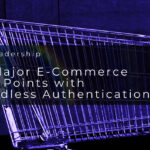The following article is a guest submission from OwnID.

Traffic is not what it used to be. Privacy regulations have conspired with the proliferation of VPN technology, making unique users as good as anonymous. According to Forbes Advisor, a third of all internet users in 2023 use a VPN, with 66 percent doing so to protect their personal data. Meanwhile, traffic spoofing, bots, and even first party solutions – like Apple’s iOS 15 update, which reduced access to user data and restricted target marketing for a majority of email marketers – have turned statistics that once provided valuable audience and customer insights into junk. Gone are the days of the high-value metrics provided by cookies, trackers, and reliable analytics platforms.
We are facing a cookie crisis – without the data relied upon to provide premium experiences for e-commerce, programmatic advertising, and enhanced website functionality, businesses are struggling to retain customers and see a return on advertising campaigns. An alternative method exists, however, and it is both privacy-forward and reliable: membership and loyalty programs.
Rather than relying on a legion of cookies and trackers that can be denied or scrubbed by standard security software, and are seeing less support by major browsers like Chrome, a user can self-identify by enrolling in a membership or loyalty program. All the general benefits of a membership program apply – including increased customer satisfaction and retention – but from an analytics perspective the program operator is back in business. Membership user data can be extremely rich, including demographics, past purchases, reviews and comments, and on-site browsing history. And even more importantly: it is all voluntarily provided by a verified human user.
Of course, there is a natural trade-off. While membership and loyalty programs are popular, especially in e-commerce, only a segment of a website’s user base can reliably be expected to enroll in a program. Surveyed loyalty members expressed two major roadblocks with the loyalty experience: lack of multi-channel support and the reliance on inconvenient login credentials. In other words, the issue comes down to friction. Signing up for an account and being required to subsequently log in with a unique username and password is too much to ask from today’s decision-fatigued, busy user. But what if that friction could be eliminated through automation and strong identity?
An automated sign-up process supported by passwordless authentication can streamline membership enrollment, while encouraging members to always use their active account. By winnowing friction-heavy registration down to a single click, and by keeping login just as easy, businesses can solve their cookie crisis while improving user experiences, protecting user privacy, and building a better security system. With OwnID, this is possible thanks to one-click loyalty.
With OwnID integrated into an e-commerce website, a first-time shopper can be presented with a one-click signup button at various points in the customer journey—on the home page, on a product page, at checkout. When they click that button, OwnID handles the registration through automated form-filling, signing up the user as a loyalty member. From that point forward, the enrolled member can log in just as easily as they signed up – with a single click – and can benefit from better recommendations based on their purchase, browsing, and review history, as well as the usual loyalty perks. Meanwhile, the website operator benefits from quality, verified user data and all the insights being denied to the competition through the cookie-opt-in data drought.
By eliminating friction for member sign-up, you can regain audience visibility while enhancing customer loyalty with a simple click. Smooth out the onboarding process and everyone benefits.








Follow Us